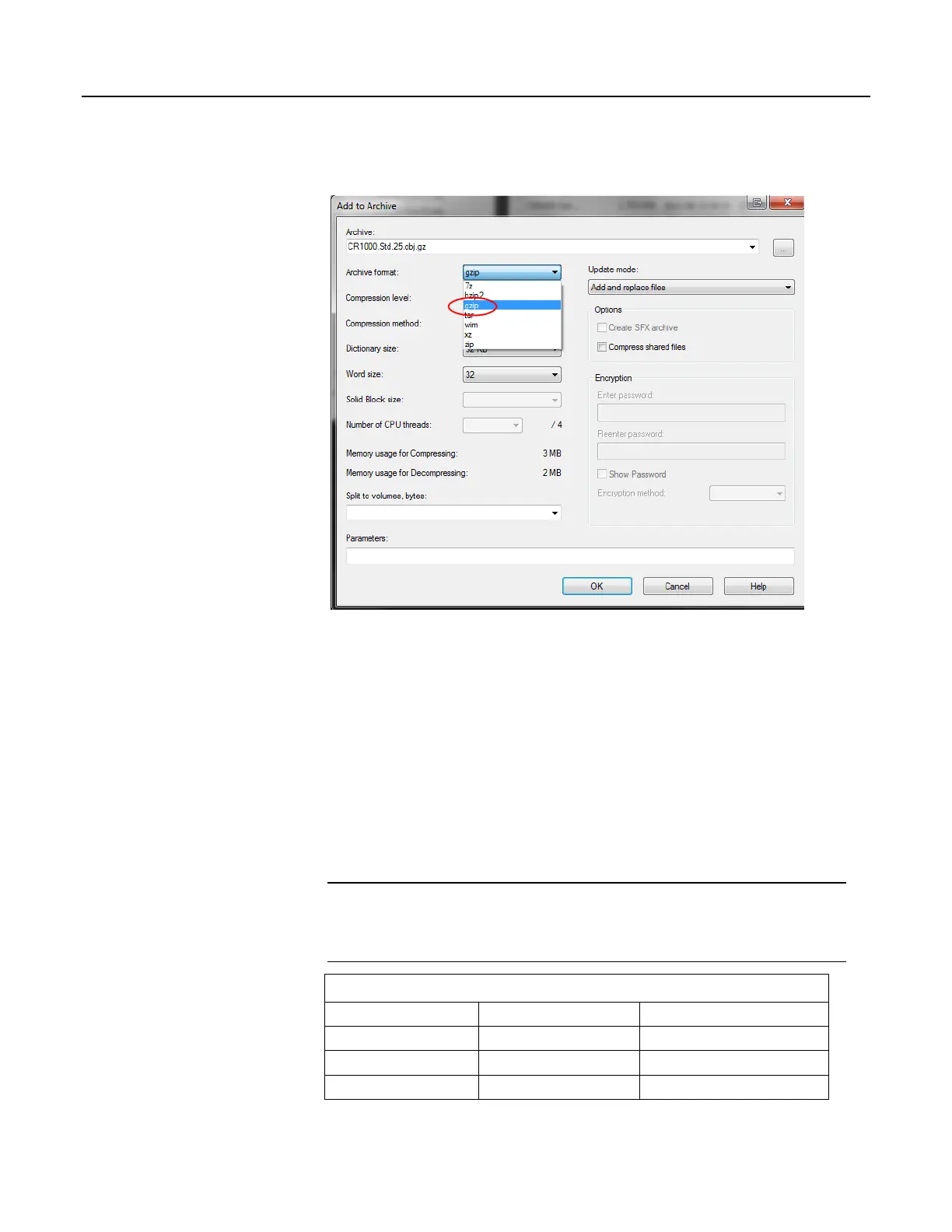c) When prompted, set the archive format to “Gzip”.
d) Select OK.
The resultant file names will be of the type “myProgram.cr1.gz” and
“CR1000.Std.25.obj.gz”. Note that the file names end with “.gz”. The ".gz”
extension must be preceded with the original file extension (.cr1, .obj) as shown.
Q: How do I send a compressed file to the CR1000?
A: A Gzip compressed file can be sent to a CR1000 datalogger by clicking the
Send Program command in the datalogger support software
(p. 95). Compressed
programs can also be sent using HTTP PUT to the CR1000 web server. The
CR1000 will not automatically decompress and use compressed files sent with
File Control, FTP, or a low-level OS download; however, these files can be
manually decompressed by marking as Run Now using File Control,
FileManage(), and HTTP.
Note Compression has little effect on an encrypted program (see FileEncrypt()
in the CRBasic Editor Help), since the encryption process does not produce a
large number of repeatable byte patterns. Gzip has little effect on files that
already employ compression such as JPEG or MPEG-4.
Table 126. Typical Gzip File Compression Results
File Original Size Bytes Compressed Size Bytes
CR1000 operating system 1,753,976 671,626
Small program 2,600 1,113
Large program 32,157 7,085
465

